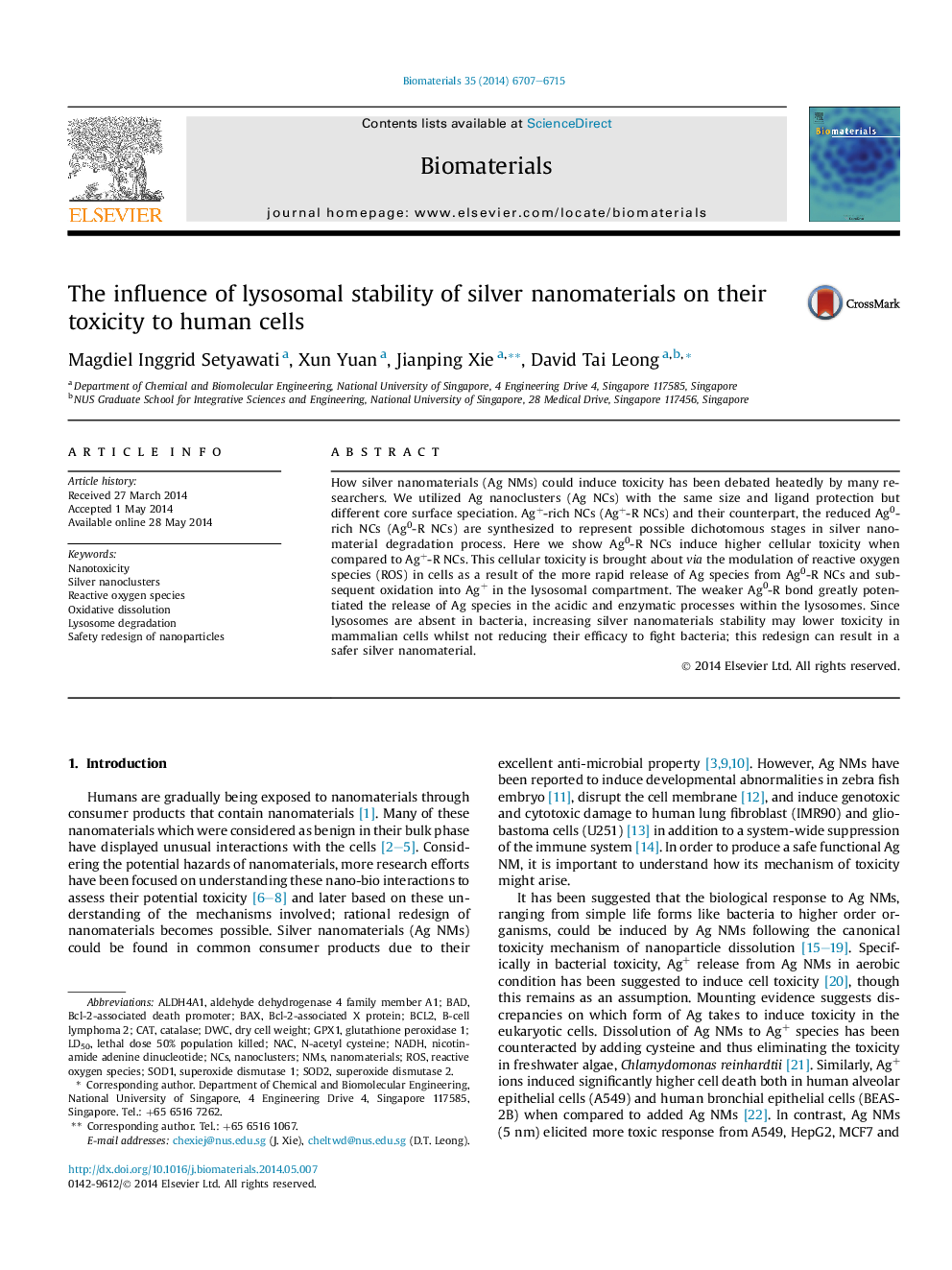| Article ID | Journal | Published Year | Pages | File Type |
|---|---|---|---|---|
| 10227497 | Biomaterials | 2014 | 9 Pages |
Abstract
How silver nanomaterials (Ag NMs) could induce toxicity has been debated heatedly by many researchers. We utilized Ag nanoclusters (Ag NCs) with the same size and ligand protection but different core surface speciation. Ag+-rich NCs (Ag+-R NCs) and their counterpart, the reduced Ag0-rich NCs (Ag0-R NCs) are synthesized to represent possible dichotomous stages in silver nanomaterial degradation process. Here we show Ag0-R NCs induce higher cellular toxicity when compared to Ag+-R NCs. This cellular toxicity is brought about via the modulation of reactive oxygen species (ROS) in cells as a result of the more rapid release of Ag species from Ag0-R NCs and subsequent oxidation into Ag+ in the lysosomal compartment. The weaker Ag0-R bond greatly potentiated the release of Ag species in the acidic and enzymatic processes within the lysosomes. Since lysosomes are absent in bacteria, increasing silver nanomaterials stability may lower toxicity in mammalian cells whilst not reducing their efficacy to fight bacteria; this redesign can result in a safer silver nanomaterial.
Keywords
SOD2LD50DWCBcl2CATNMSSOD1GPx1NACNCSNanoclustersROSOxidative dissolutionBaxBADsuperoxide dismutase 1Superoxide dismutase 2B-cell lymphoma 2Bcl-2-associated death promoterNADHNanotoxicityNanomaterialsSilver nanoclustersN-acetyl cysteinenicotinamide adenine dinucleotidedry cell weightBcl-2-associated X proteinCatalaseglutathione peroxidase 1Reactive oxygen species
Related Topics
Physical Sciences and Engineering
Chemical Engineering
Bioengineering
Authors
Magdiel Inggrid Setyawati, Xun Yuan, Jianping Xie, David Tai Leong,
